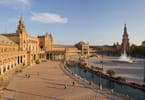When I visited Bordeaux, I wondered about the magnificent 18th century architecture complete with mansions and public buildings that make this a very beautiful and architectural city. What was the source of the money that built this city – certainly it did not come from the early stages of the wine industry. Lurking behind these magnificent facades is a sinister legacy.
Slave Trade
Slavery played an important role in the development of Bordeaux’s economy between the 16th- 19th centuries. It was a lucrative business with French ships moving almost 2 million Africans to the New World via transatlantic trade, conducting over 500 slave expeditions.
In the mid-17th century, Jean-Baptiste Colbert, Minister of Finance to Louis XIV, designed Code Noir and it defined the conditions of slavery in the French colonial empire including:
1. Fugitive slaves absent for a month would be branded and their ears cut off.
2. Punishment for a 2-month absence was the cutting of hamstrings.
3. A third absence results in death.
4. Owners could chain and beat slaves, but not torture or mutilate them.
The Code Noir was considered among most extensive official documents on race, slavery, and freedom ever drawn up in Europe.
Slavery was abolished in 1794 because of both the Haitian and French Revolution. When Napoleon Bonaparte came into power with the objective of creating the French Empire one of his changes was that slavery was again legal (1804). It would take another 40 years before slavery would be abolished, although it did continue clandestinely, until after the US Civil War. The French Parliament declared slavery a crime against humanity in 2001
Pivot
French businessmen were very efficient, codifying rules in order to run a smooth and successful slave trade. At the beginning of the 19th century France lost its most important colony, St. Domingue (currently Haiti), and as the abolition movement expanded in Europe, the slave traders in Bordeaux (one of the larger trading depots for slave trade in the world), faced pressure to shift from colonial commerce involving the trade of enslaved humans, into trading something else and wine entered the picture.
Through this shift the merchant families continued to thrive and accumulate wealth (17 of the 25 wealthiest families traded in both fields). The founders of the wine trade were so skilled that today, centuries later, many of these merchant families continue to hold leading positions in the fine wine and related industries with many streets in the city named after them including (i.e., David Gradis, 1665-1751, street who owned 10 slave ships; Saige Street; Place des Quinconces, the largest square in Bordeaux, paraded slaves for public viewing).
Business Protocols Recycled
The business practices developed in human trafficking formed the foundation for the wine trade. The concepts reused include:
1. High value perishable products transported for more than a century.
2. Bordeaux standards defined “quality” of enslaved humans emphasizing the source of origin (different regions in western Africa) establishing four basic quality classes.
3. Pricing mechanisms were used to set up a baseline price for the highest quality with lower percentages for each lower quality class.
4. The idea of a microclimate (soil, precipitation, etc.) linked to a unique small territory was fundamental to the definition of quality.
Using the slave trade system as a template, in 1855 the well-known wine classification system defined quality wine and the rules stipulated five quality classes from Quincoces Premier Cru to Cinquie me Cru – a system still in place.
Merchant families invested in winemaking, purchasing old vineyards, draining sumps, and planting new vines. Using the resources from selling enslaved humans, they built chateaus in medieval style and made production and sales of wine more effective and at a larger scale.
Most of the old large estate owners had their properties nationalized during the revolution and in the post-revolution era these vineyards and chateaux were up for sale, making it easy for wealthy merchants to enter this business. The merchants also formed banks and insurance companies to organize and protect their trade.
Tourism

Visitors interested in the history of the Bordeaux slave trade should contact, Karfa Diallo (facebook.com/karfa.diallo), founder of Memoires et Partage (campaigns around memory of transatlantic slavery in France and Senegal) and Founder of Bordeaux’s Black History Month.
In 2009, the Museum of Aquitaine established a permanent exhibition detailing Bordeaux’s role in France’s slavery-based commerce. The city government placed a plaque on a dock along the river to commemorate the history of slavery. In addition, a statue of Modeste Testas, an enslaved woman who was bought by two Bordeaux brothers, was erected on the riverbank. In addition, the city has installed plaques on five residential streets named after prominent local men who were involved in the trans-Atlantic slave trade.
This is a series focusing on the wines of Bordeaux.
Stay tuned for more.
© Dr. Elinor Garely. This copyright article, including photos, may not be reproduced without written permission from the author.
#wine #bordeaux
WHAT TO TAKE AWAY FROM THIS ARTICLE:
- Domingue (currently Haiti), and as the abolition movement expanded in Europe, the slave traders in Bordeaux (one of the larger trading depots for slave trade in the world), faced pressure to shift from colonial commerce involving the trade of enslaved humans, into trading something else and wine entered the picture.
- Using the slave trade system as a template, in 1855 the well-known wine classification system defined quality wine and the rules stipulated five quality classes from Quincoces Premier Cru to Cinquie me Cru – a system still in place.
- The founders of the wine trade were so skilled that today, centuries later, many of these merchant families continue to hold leading positions in the fine wine and related industries with many streets in the city named after them including (i.






















